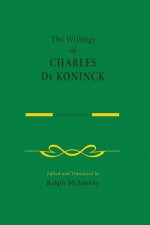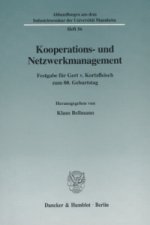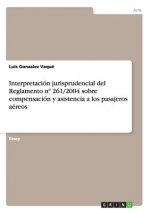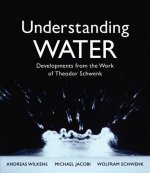
Code: 01414703
Analytical Tools for Environmental Design and Management in a Systems Perspective
by Nicoline Wrisberg, Helias A. Udo de Haes, Ursula Triebswetter, Peter Eder
The aim of this book is to link demand and supply of environmental information in the field of Life Cycle Management. The book is based on the results of the CHAINET concerted action financed by EU-DGXII for the work period 1998-2 ... more
- Language:
 English
English - Binding: Hardback
- Number of pages: 275
Publisher: Springer-Verlag New York Inc., 2002
- More about this

138.28 €

Low in stock at our supplier
Shipping in 12 - 15 days
Potřebujete více kusů?Máte-li zájem o více kusů, prověřte, prosím, nejprve dostupnost titulu na naši zákaznické podpoře.
Add to wishlist
You might also like
-

China's Hidden Children
32.86 € -

Secrets Behind Those Eyes: Secrets of Savannah Book 1
19.37 € -

Philosophy of Revelation
34.39 € -4 % -

Stories and Minds
39.15 € -

When Summer Comes Level 4
13.79 € -

Social Context of the New Information and Communication Technologies
46.46 € -

Writings of Charles De Koninck
52.14 € -

Cafe Babar
6.28 € -

RAW s programem Adobe Photoshop
16.43 € -18 % -

Selbstregulation erfolgreich fördern
33.07 € -

Kooperations- und Netzwerkmanagement.
95.06 € -

Die Zaubermädchen - Hokus, Pokus, Leonie
10.54 € -10 % -

Hongkong Neo-Noir. Narrative und asthetische Kennzeichen des Film Noir am Beispiel von John Woos The Killer
94.35 € -

Interpretacion jurisprudencial del Reglamento n Degrees 261/2004 sobre compensacion y asistencia a los pasajeros aereos
45.55 €
Give this book as a present today
- Order book and choose Gift Order.
- We will send you book gift voucher at once. You can give it out to anyone.
- Book will be send to donee, nothing more to care about.
More about Analytical Tools for Environmental Design and Management in a Systems Perspective
You get 345 loyalty points
 Book synopsis
Book synopsis
The aim of this book is to link demand and supply of environmental information in the field of Life Cycle Management. The book is based on the results of the CHAINET concerted action financed by EU-DGXII for the work period 1998-2000, and is intended to build bridges between the different scientific communities in the field of Life Cycle Management. A structured approach is followed, meaning that both demand and supply of environmental information are characterised, after which the two are linked. Chapter 2 deals with the demand side; a number of characteristics are identified including the object of analysis, different question types, consecutive decision steps, and the cultural context of the decision at hand. Chapter 3 gives an overview of the supply side, distinguishing between concepts, analytical tools, procedural tools, technical elements, and data. The focus of the book is on analytical tools. In Chapter 4 and in a 34-page annex, eleven analytical tools are systematically described, including LCA, MIPS, ERA, MFA, SFA, CERA, IOA, analytical tools for ecodesign, LCC, TCA, and CBA. In Chapter 5, demand and supply are linked, starting from the question types and indicating which types of tools are particularly suited for which type of question. For instance, it is shown that LCA is particularly useful for operational questions, but less so for more strategic questions. Other aspects concern the distinction between a broad overview and a detailed analysis, and, interestingly, the cultural context of the decision. It appears that without agreement on the criteria to be used, quantitative analytical tools such as LCA, ERA, or CBA may not be very helpful as support for decision-making. Rather more robust quantitative, or even qualitative, tools may then be used instead. Chapter 6 makes a number of concluding remarks. A plea is made for the combined use of tools, rather than the development of a super tool. Another important topic concerns the customisation of tools, which is seen as quite useful if combined with a periodic validation against a more detailed analysis. In the text of the preceding chapters, 26 text boxes are included as practical illustrations of the principles described in the text. In the following chapters, three cases are presented, dealing with electronic goods, the car, and clothes washing. These cases show how, in practice, different tools are used in combination, as a support for a given decision situation. The book is particularly suited for courses in higher education, both for universities and polytechnics, and for use by consultancy firms, by larger companies, and industrial branch organisations.The aim of this book is to link demand and supply of environmental information in the field of Life Cycle Management. The book is based on the results of the CHAINET concerted action financed by EU-DGXII for the work period 1998-2000, and is intended to build bridges between the different scientific communities in the field of Life Cycle Management. A structured approach is followed, meaning that both demand and supply of environmental information are characterised, after which the two are linked.
 Book details
Book details
Book category Knihy po anglicky Earth sciences, geography, environment, planning The environment Environmental management
138.28 €
- Full title: Analytical Tools for Environmental Design and Management in a Systems Perspective
- Subtitle: The Combined Use of Analytical Tools
- Author: Nicoline Wrisberg, Helias A. Udo de Haes, Ursula Triebswetter, Peter Eder
- Language:
 English
English - Binding: Hardback
- Number of pages: 275
- EAN: 9781402004537
- ISBN: 1402004532
- ID: 01414703
- Publisher: Springer-Verlag New York Inc.
- Weight: 662 g
- Dimensions: 235 × 155 × 18 mm
- Date of publishing: 31. May 2002
Trending among others
-

Let There Be Water
21.80 € -6 % -

Energy
11.05 € -23 % -

Grid
21.50 € -

Holistic Management
46.87 € -7 % -

Sowing Seeds in the Desert
17.04 € -18 % -

Prepper's Water Survival Guide
14.60 € -10 % -

Green Infrastructure
48.18 € -7 % -

Urban Street Stormwater Guide
46.87 € -7 % -

Who Really Feeds the World?
21.80 € -9 % -

Handbook of Sustainable Luxury Textiles and Fashion
70.20 € -

Frackers
18.56 € -23 % -

How to Permaculture Your Life
16.43 € -23 % -

Water 4.0
19.98 € -

Solar Assisted Ground Source Heat Pump Solutions
88.77 € -

Environmental Science for Environmental Management
96.18 € -

Energy at the Crossroads
46.46 € -

Green Bubble
24.65 € -13 % -

Energy Security
22.11 € -3 % -

Peak Everything
14.30 € -23 % -

Practical Hints upon Landscape Gardening
59.45 € -

Water Ethics
37.63 € -

Drought Stress in Maize (Zea mays L.)
70.20 € -

Tropical Forest Ecology
274.65 € -

Global Energy Justice
51.33 € -

Environmental Pollution and Natural Resource Management
249.89 € -

24 Days
16.43 € -4 % -

Governing Transboundary Waters
86.13 € -

Wildlife Crime, 2nd Edition
9.22 € -13 % -

Beyond the War on Invasive Species
23.02 € -3 % -

Approaches to Water Sensitive Urban Design
171.56 € -

Food
17.24 € -5 % -

Design and Construction of Phosphorus Removal Structures for Improving Water Quality
150.76 € -

Innovation and Technology - Strategies and Policies
138.28 € -

Conservation Biology
274.65 € -

Understanding Water
33.37 € -

Water, Power and Politics in the Middle East
239.44 € -

Living the High Life in Minsk
92.12 € -

Impact Assessment - Practical Solutions to Recurrent Problems and Contemporary Challenges, Second Edition
190.74 € -

Conifer Manual
274.65 € -

Art & Energy
66.55 € -

Concepts of Environmental Management for Sustainable Development
42.30 € -

Green Banking
174.10 € -4 % -

Water Book
13.79 € -12 % -

Wind Energy Explained - Theory, Design and Application, 2e
145.49 € -

Power Hungry
21.80 € -6 % -

Brownfields Redevelopment
243.71 € -

Comprehensive Energy Systems
4747.97 € -

Applied Ecology
146.30 € -

Helium-3
173.80 € -12 %
Osobný odber Bratislava a 2642 dalších
Copyright ©2008-24 najlacnejsie-knihy.sk Všetky práva vyhradenéSúkromieCookies


 21 miliónov titulov
21 miliónov titulov Vrátenie do mesiaca
Vrátenie do mesiaca 02/210 210 99 (8-15.30h)
02/210 210 99 (8-15.30h)